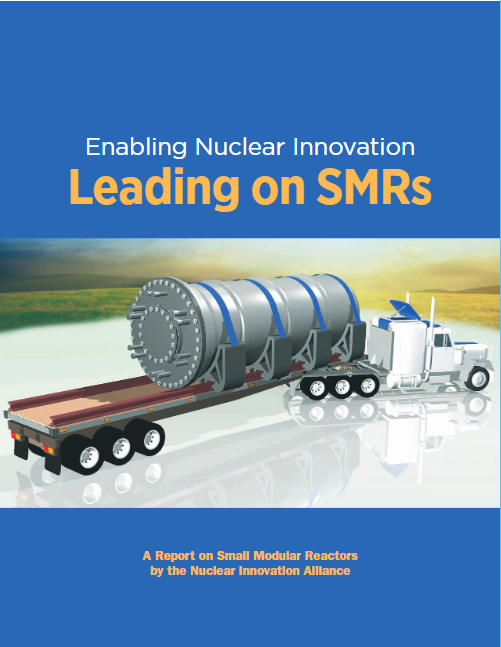
WASHINGTON D.C. (October 11, 2017) The Nuclear Innovation Alliance (NIA) today released recommendations to support the development and commercialization of small modular reactors (SMRs) by U.S. companies. The report provides guidance for state and federal governments to accelerate both light water and non-light water SMR design availability to meet global energy challenges and national security imperatives.
“By supporting new SMR technology deployment, the United States can help secure its position as an international leader on nuclear technology for decades to come,” said Ashley Finan, NIA policy director. “Our report makes discrete recommendations to federal and state policymakers and officials to support the development of this extremely valuable energy technology.”
With aging U.S. coal and nuclear plants slated for retirement, and the urgency of combating climate change, SMRs are well-suited to help provide the next generation of much-needed clean, dispatchable energy, alongside renewable energy and other low-carbon energy sources.
On a global scale, SMRs have the potential to help meet growing international energy demand as nations work to lift billions of people out of poverty. These technologies offer an alternative to traditional, large light water reactors with power outputs that can better match the scale of developing world energy needs. SMRs have enhanced safety cases and operational flexibility, including the ability to better complement variable energy sources such as wind and solar.
Between domestic and export opportunities, a U.S. SMR industry could create or sustain hundreds of thousands of American jobs.
“By investing in a portfolio of reactor technologies and providing a continuum of support through different stages of development, the U.S. government can bolster SMR innovation while allowing the market to guide technology selection,” said Matt Bowen, author of the report. “Our findings indicate that we are at an important juncture where targeted incentives for SMRs can make a big difference for the country’s future clean energy options.”
The NIA’s SMR recommendations call for:
-
Congress and the Administration to expand support for new reactor design and licensing to include non-light water designs and extend support through design finalization;
-
Congress to amend the nuclear energy tax credit to help first-of-a-kind SMR projects to close the economic gap with carbon-emitting natural gas plants;
-
The Secretary of Energy to procure clean, secure power for federal facilities through power purchase agreements with the SMR projects under development by the Utah Associated Municipal Power Systems (UAMPS) and the Tennessee Valley Authority (TVA); and
-
State governments to expand existing or proposed Renewable Portfolio Standards into Clean Energy Standards that could include SMRs and other advanced nuclear technology.
To download a copy of the report, please visit the NIA website.
###
About the Nuclear Innovation Alliance
The Nuclear Innovation Alliance (NIA) leads advanced nuclear energy innovation. We assemble companies, investors, experts and stakeholders to advance nuclear energy innovation and enable innovative reactor commercialization through favorable energy policy and funding. We research, develop and advocate policies that enable the efficient licensing and timely early-stage demonstration of advanced reactor technologies. Learn more about NIA at http://www.nuclearinnovationalliance.org/ and on Twitter at @theNIAorg and Facebook at www.facebook.com/theNIAorg.